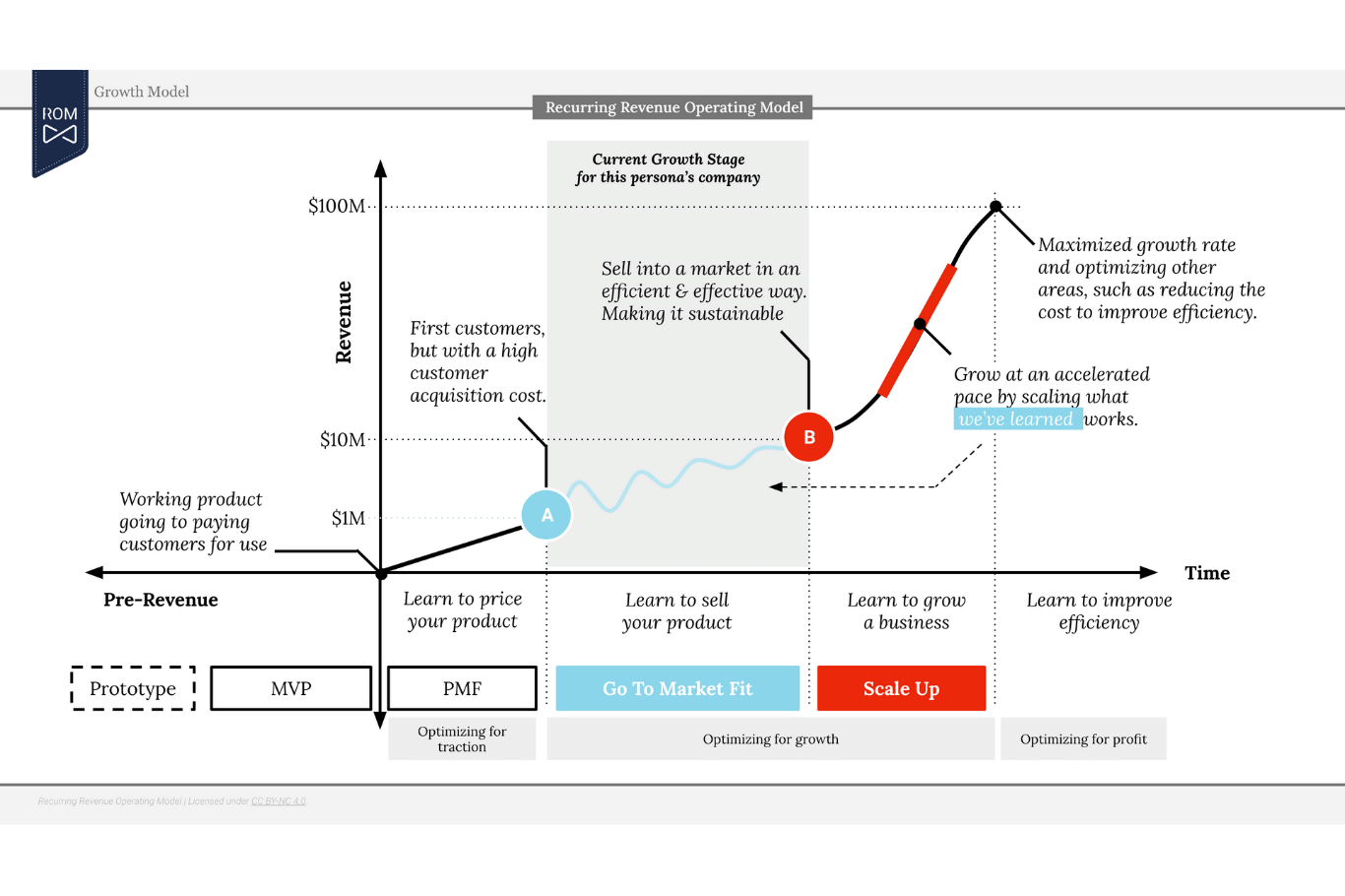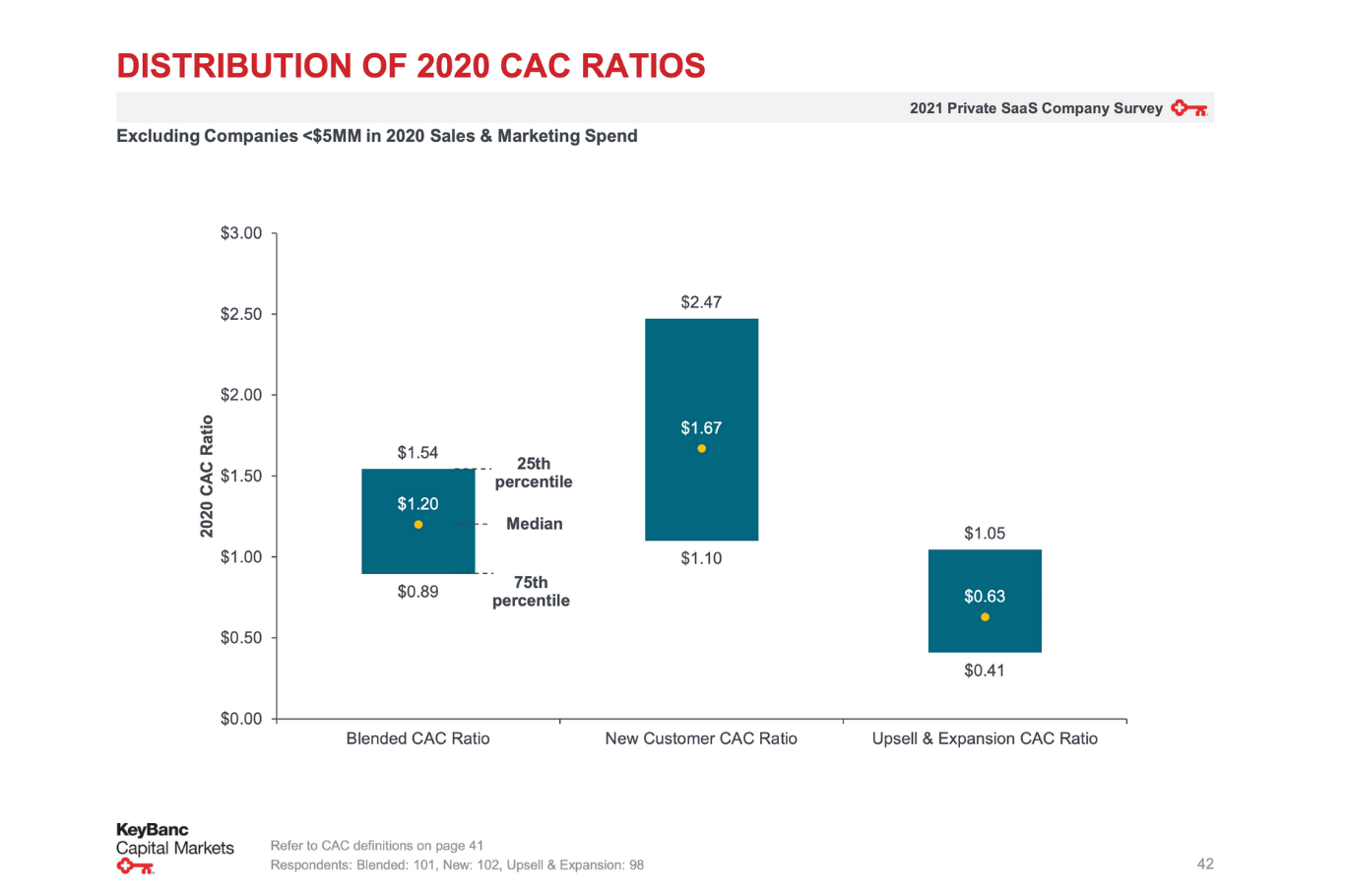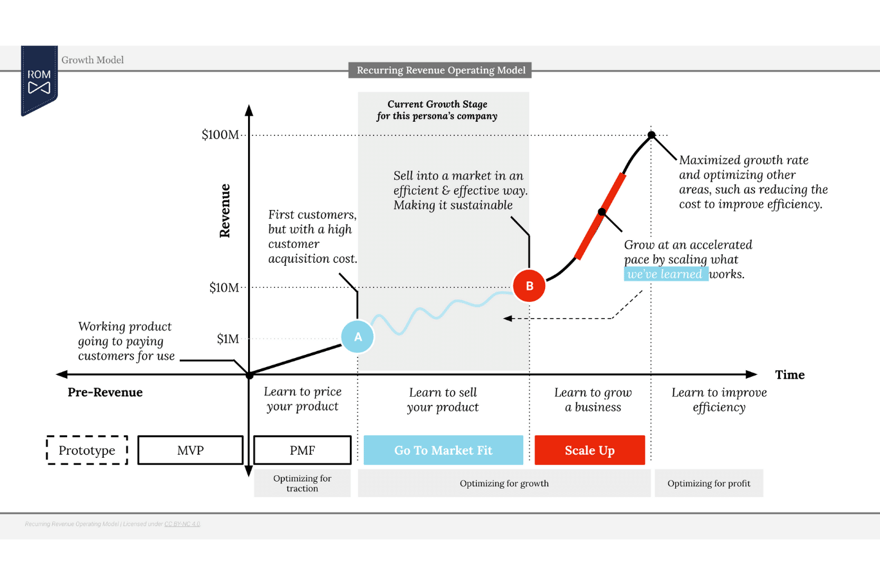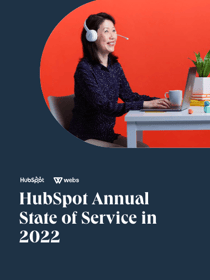At Webs, we often work with scale-ups that are on the path from 1 million to 10 million Euros in ARR. Most of them show a similar growth pattern: they often have a strong focus on winning new customers.
 However, as they continue to build their customer portfolio, their existing customers are also increasingly impacting their growth over time. Those customers will purchase more or less from them. And that's how they gain or lose revenue.
However, as they continue to build their customer portfolio, their existing customers are also increasingly impacting their growth over time. Those customers will purchase more or less from them. And that's how they gain or lose revenue.
It is not easy for many young companies to build successful customer relationships. Some customers expected something different from the product, or they did not receive sufficient support. At some point, those customers give up.
To grow, these companies must ensure that the revenue they gain from new customers (new ARR) is greater than the revenue they lose from existing customers (churn). But there are two major risks involved:
- Gaining revenue from new customers is 2.5x more expensive compared to existing customers
- If you attract the wrong customers, your churn will grow, making the hole in your bucket bigger.

The why and when of the churn problem at SaaS companies
A (strong) churn at a young SaaS company is not abnormal. After all, there is still a gap between the impact you think you will make with your product (your Value Proposition) and the impact you actually make on your customers. Closing that gap takes time.
If you are not 100% clear on the impact you are making, you are missing the necessary insights to understand who your ideal customers are and what they have in common. And that's why younger companies usually have more "bad" customers. Over time, these customers will spend less and even leave your company.
That being said, it is important that you have a clear picture of the situation and work out an action plan.
On your way to 2 to 3 million Euros, you may feel the impact of your churn less, but once you get close to 5 million Euros, it starts to weigh on your growth. Then sales and marketing really start to swim upstream.
" Churn starts to impact growth somewhere in the $5 million range. At $10 million ARR, high churn starts to stop growth. At $20 million, it can end your startup. "
Jason M. Lemkin
Some companies don’t get their churn under control and see their growth slow down or even come to a complete standstill. And that’s a scary thing to experience.
Small changes, exponential impact
Companies whose growth strategy focuses mainly on new customers are seriously missing out. Here’s an example:
- You have 70 customers with an average ARPA of €36,000. The total annual turnover, therefore, amounts to € 2.52 million.
- Scenario 1: Over 3 years you average an annual upsell of 2% and a churn of 10%. Result: €6.38 million in turnover.
- Scenario 2: During 3 years you average an annual upsell of 4% and a churn of 2%. Result: €7.85 million in turnover.
This example shows how small (and often achievable) changes can lead to a big impact. Increase your retention by 8% and your upsell by 2%, and you'll bring in €1.5 million in additional revenue over three years. BOOM, that’s crazy! 😎🔥
And what makes this story even better is that you not only grow in revenue but also in profit, because retaining or increasing the revenue from existing customers is easily 2.5x cheaper than acquiring new customers.
How do you avoid a scenario where your growth will slow down?
You’ve got two options.
Option 1: you are already so busy. Just stick your head in the sand and hope everything will work out in the end. 🙈🤞🏻
Option 2: under the motto prevention is better than cure, it is best to anticipate this before you really feel the problem.
You do this in the first place by paying more attention to your existing customers. Some of you will be thinking: “ Pay attention to our customers? Duh! We already do! ”
That's true. But there are different levels.
Bye-bye “growth at all costs”
This aligns nicely with one of the most important trends in SaaS today: the mind-shift away from “growth at all costs”, away from the blind focus on volume, and towards a more sustainable growth model.
" We are experiencing a shift from HyperGrowth in which growth is a function of speed, to sustainable growth in which growth is a function of cost (profit)."
Jacco van der Kooij
If this trend breaks through, this will make everyone really happy, because you can't scale what isn't sustainable.
Customer insights' magic number three
Throughout human history, the number ‘3’ has had a unique meaning. The ancient Greek philosopher Pythagoras argued that the meaning behind numbers was very important. In the eyes of the ancient Greeks, the number 3 was considered the perfect number, the number of harmony, wisdom, and understanding.
So here’s a list of 3 things you should do when looking to deepen your understanding of your customers:
- Make the problem visible with the right metric
- Keep your finger on the pulse of your customers
- Work on deeper insight into your customers
Make the problem visible with the right metric
Step 1 towards a solution is always: making the problem visible so that everyone is aware of it. I prefer to use Net Revenue Retention (NRR) for this.
Your NRR shows how much more or fewer customers have purchased from you over time. If your NRR < 100%, then that is less. If your NRR > 100% then that is more. It's that simple.
- an NRR of < 100% is a bad thing;
- an NRR of > 100% is a good thing; and
- an NRR of > 120% is an excellent thing.
You can lean on this Benchmark for assessing your own NRR, but more important is how your NRR evolves over time and how that evolution relates to your CAC ratio and your growth.
If your NRR declines, you should see your CAC ratio rise and your growth slow down. That's what I love about this metric. You’re not only driving top-line growth (revenue), but also bottom-line growth (profit).
And that's important because by the time you climb out of that “Valley of Death”, and you reach the magical limit of 10 million Euros in ARR, you have scale big time. You have to know what levers to pull to accelerate growth. And remember: you can't scale what isn't sustainable.
Keep your finger on your customers' pulse
NRR and Churn are what they call lagging metrics. They give us a good indication that there is a problem, and we can act upon it. In step 2 we go one step further: how can we predict the problem, even if we don't see the impact yet? For this, we have to look for a good leading indicator.
The best leading indicator for NRR is customer satisfaction. Because if your customers are not satisfied, that’s a problem. If you’re not making a recurring impact, you will not receive any recurring revenue. That is why it is so important to keep a finger on the pulse of your customers.
To keep that finger on the pulse, you need to set up a process. You want to collect that data in the most correct way possible. You can do that, for example, by collecting your NPS at regular intervals. You can use this score as a leading indicator for your NRR so that you can take action before you start feeling its effect on your revenue and growth.
But to work with a leading indicator, you have to be able to do cohort analysis and compare groups of customers over a certain period. Young companies sometimes don't have enough data to understand how one metric compares to another metric further down the line. If that’s the case, just start by measuring the lagging metric. These metrics are very meaningful in themselves.
Ultimately, you need to decide whether the thing you're tracking helps you make better decisions. A real metric has to be actionable, otherwise, it's just a vanity metric.
Lagging and leading metrics can both be actionable, but leading indicators show you what will happen.
Work on deeper insight into your customers
With steps 1 and 2 you mainly work on quantitative data. They give you the hard numbers and expose the trend, but does that give you sufficient insight into the 'why'?
Many people have been taught the reflex to only look at the quantitative data. Yet for Customer Insights, qualitative data is actually more important. The reason is simple: you get to understand the context of those hard numbers.
The information is much richer and gives you a lot more insight. And it's that extra level of insight that can make a world of difference.
“ If quantitative data answers what and how much, qualitative data answers why. Quantitative data adhors to emotion; qualitative data marinates in it. "
Lean Analytics
Here’s an example of a situation we encountered:
We were working with a company that had built a plugin with additional features for legacy software. With an ARPA of below 1K Euros, they were on a PLG-motion. They had a strong case and could easily convince people to buy a Free trial. But then things went wrong. Only few users were switching to a paid plan. All the money they spent generating these PQLs was lost.
The solution to this problem lay with the customers who did make the switch. The question we asked ourselves was: what do these customers have in common?
Why did we look at the good customers instead of the churned ones? Because it's more important to understand what works, rather than what doesn't. Because you can't scale failure.
In this case, it turned out that 'happy customers' had in common that they used the plugin on a weekly basis. At least four times per month. Their feedback was:
“The workflow is quite different from that of the legacy software itself, and it takes some getting used to. But once you've got it, it's super and you can't work without it anymore.” Happy users.
That insight had a huge impact. And through additional qualitative research, we were able to dig deeper. We quickly discovered which use cases require frequent use of the plugin so that marketing could focus on them.
What about the other customers? We ignored them because we knew it wasn't a good match and so we had very little chance of renewing them.
This is a great example of how we noticed the problem by looking at the quantitative data, but we only got insight into the “why” after we started talking to the (right) users.
Many companies find qualitative data difficult to retrieve. At Webs, we put a lot of effort into this ourselves, and here's how:
- Self-reported attribution on our decision stage forms (how did you hear about us?)
- Playbooks in HubSpot for Sales and Customer Success (asking the right questions)
- Reviewing recordings of sessions with clients from both the Sales team and the Customer Success team
- 1:1 customer interviews by Marketing to collect feedback on their experience and if they like us: a review on HubSpot
- Listening to conversations from buyers and influencers (in our case that happens on LinkedIn)
- Being active in communities like Pavilion, SaaS Bazen, and Exit Five. Not by selling, but by contributing
It's important to understand that collecting good qualitative data takes preparation. You need to ask specific questions without leading (potential) customers or skewing their answers. You have to avoid letting your enthusiasm and reality distortion rub off on your interview subjects. Unprepared interviews yield misleading or meaningless results.
We refer to this internally as our Customer Insights Flow. The insights are constantly flowing in and are analyzed and discussed on a regular basis. In this way they make an impact everywhere: on our messaging, the choices to invest more or less in certain channels, the targeting, and qualification of customers, our content, the further development of our services, etc.
It is so simple and the impact is so big that we decided to start offering it as a service to customers. This pure gold, and we don’t want to withhold this from anyone. 🙃
Making Customer Insights a priority for all customer-facing teams
Everyone can contribute to retrieving these insights. But it doesn’t stop there. Everyone can also contribute to improving your NRR. And we're not just talking about your Customer Success Managers, but also your sales and marketing and customer service teams.
The impact your Customer Success Managers have on your NRR is obvious. It’s their mission to ensure that customers are successful and experience recurring impact from your product and services.
This is less evident in Sales and Marketing. And many people in those teams aren’t aware of its potential. Especially when these teams only work on attracting new customers. But guess what: SHIT IN = SHIT OUT. Always.
That’s why other teams should also be aware of the importance and impact they too can have when it comes to NRR. For example, your marketing can ensure that they attract the right customers, and sales can ensure that they close deals with the right customers.
What applies to the Target Account List when you’re running ABM also applies here: the results of the Customer Success team are limited to the quality of the customers coming in. If sales and marketing bring in the wrong customers, your churn will grow regardless of their efforts.
Ideally, you want to use your NRR in a proactive way. There are 3 different levels we use to categorize clients:
| Success | Sales | Marketing | |
| Level 1 | Reactive | Not involved | Not involved |
| Level 2 | Proactive | Not involved | Not involved |
| Level 3 | Proactive | Proactive | Proactive |
Put the customer at the center of your People Process Technology (PPT)
Now that you have a good idea of who your ideal customer is, how they prefer to buy from you and what impact is expected, you now have this huge competitive advantage you can leverage.
In doing so, you need to take a close look at all your customer-facing teams. You want to align them around your (potential) customers with only one goal in mind: to create the right experience throughout their journey with your company. Because it’s this experience that will ultimately lead to both revenue growth and growth in profit.
Map out the journey of your best customers, and map your PPT to that Journey. And ask yourself:
- Where do you still lack expertise?
- What content do you still have to create?
- Where are the frictions in the process?
- Do you still lack the technology?
- Is certain technology causing friction?
At Webs, we use a framework for it: the Growth Framework. That framework is based on the Cyclonic Buyer Journey and the Lifecycle Stages in HubSpot. Hopefully, it will help you map out your journey and your PPT. You can get a copy of that Framework via our contact form.
Key Take-aways
- Many Saas companies are having a hard time around 5 million euros in ARR. By paying more attention to their customers earlier in their journey, they can avoid that problem.
- Small (and often achievable) changes in quality can lead to exponential impact. These are often easier to achieve than when you approach growth in a linear manner.
- Qualitative data gives you the context, the 'why'. That information gives you much more insight. This way you can make more impact.
- Not only Customer Success, but all Client-facing teams can contribute to the collection of insights and proactively manage NRR.
- Align your People Process Technology around your (future) customers with only one goal in mind: to create the right experience throughout their journey with you.
Our Mission
At Webs, we're supporting SaaS companies here in Western Europe with this transition. Because it is not enough to grow; it also has to be sustainable. You cannot scale what isn't sustainable.
Would you like to learn more about Webs and how we help our customers build a more sustainable growth model? Come talk to us.




